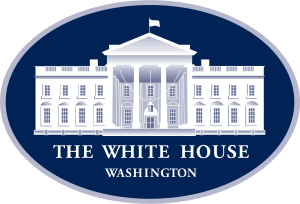What is M-23-07?
Overview
The deadline for the White House Executive Order M-23-07, is June 30, 2024.
Has your agency made the necessary arrangements to comply and transition to electronic records?

What is M-23-07?
The White House Executive Order M-23-07 was issued by the Office of Management and Budget (OMB) and the National Archives and Records Administration (NARA) on December 23, 2022 as a roadmap for federal agencies to transition from paper-based records to electronic records by June 30, 2024. In a world where information is increasingly digital, this directive emphasizes the need for a paperless environment, making government operations more efficient and accessible to the public.
M-23-07 states that by June 30, 2024, NARA will no longer accept transfers of permanent or temporary records in analog formats and will accept records only in electronic format with appropriate metadata. Further, the order states that agencies must manage all permanent and temporary records in an electronic format or store them in commercial records storage facilities.
Response to Records Backlog
“Strong records management is necessary for transparency and accountability and underpins our democracy,” M-23-07 states.
Electronic Records
Electronic records, as outlined in the memorandum M-23-07, are a fundamental component of modern records management within government agencies. In this context, electronic records refer to data and information stored in digital formats, encompassing various types of content crucial to government operations. These records include documents, emails, spreadsheets, databases, and multimedia files, among others. The memo underscores the significance of transitioning federal agencies to a paperless or electronic environment, emphasizing the need for records to be maintained and managed in digital formats. By doing so, the government aims to enhance transparency, efficiency, and public engagement, enabling the effective communication and interaction of citizens with government entities. Electronic records, with their inherent benefits, play a pivotal role in realizing these objectives, especially in the context of the M-23-07 directive that mandates the transition to electronic records by June 30, 2024.
“When records get lost, time gets wasted. When records can’t be retrieved, those who need them can’t be helped. Inefficient recordkeeping produces inefficient government. But there’s even more to it. We have to overcome the challenges we face as records managers because democracy needs it. Open government, accountable to the people, requires open records, accessible to the people, now, and in the years to come.”
– John W. Carlin, Archivist of the United States (1998)
What is the difference between M-19-21 and M-23-07?
M-23-07 reinforces and reaffirms M-21-19’s commitment to electronic records management, as well as updates the target date from December 31, 2022 to June 30, 2024 . While both directives prioritize transparency and accountability through effective records management, M-23-07 reinforces the importance of strong records management by highlighting its necessity for a well-functioning democracy. It underscores that transitioning to electronic records is not merely a matter of convenience but a fundamental requirement for government operations.

How can an agency comply to M-23-07?
The transition to electronic records is crucial for government agencies to enhance transparency and efficiency. Knowvation RM offers comprehensive solutions to facilitate compliance with these requirements. Here’s a step-by-step guide on how you can navigate this transition while leveraging Knowvation RM’s capabilities:
Step 1: Assess Your Current Records
Start by conducting a thorough assessment of your agency’s current records. Identify the types of records you manage, whether they are permanent or temporary, and in what format they currently exist. We recommend referring to NARA’s Records Management Key Terms and Acronyms. This assessment will lay the foundation for your transition plan.
Step 2: Define Record Categories
Categorize your records to distinguish between permanent and temporary records. Understand the significance and retention requirements for each category, as M-23-07 specifically addresses how both types should be managed.
Step 3: Establish Digital Document Standards
Define the digital document standards your agency will follow. Ensure that your electronic records comply with the format and metadata requirements specified in M-23-07, which may include file plans, retention schedules, and appropriate metadata. Note the Universal Electronic Records Management (ERM) standards and requirements.
Step 4: Select a Records Management Solution
Select a records management solution that aligns with the requirements of M-23-07. Knowvation RM offers an enterprise-level solution tailored to meet these demands. It facilitates the creation, organization, and management of electronic records in compliance with federal regulations.
Step 5: Digitize Existing Records
One of the crucial aspects of M-23-07 is the conversion of existing hardcopy records into digital formats. Knowvation RM’s associated service bureau, PTFS Digitization Service Bureau, has over 20 years of experience in digitization, including film, photographs, specialized film products, and analog-to-digital video. Leverage their expertise to efficiently convert your legacy records.
Step 6: Implement Knowvation RM
Integrate Knowvation RM into your records management infrastructure. The software offers intelligent search and federated search capabilities, making it easier to locate and retrieve electronic records efficiently. Additionally, it ensures compliance with NARA’s Universal Electronic Records Management (ERM) requirements.
Knowvation RM features include:
- Integrated workflow engine for RPA
- Index in place using federated indexing technology to support records governance
- Discovery of data anywhere internally or externally, for any structured and unstructured data, images, and videos
- Audit trail and alerts based on file activity and user’s credentials
- Manage and capture shared drive repositories, email, SharePoint collections, database records, and more
- Manage retention schedules quickly and easily
- Easily integrates with digitization and conversion software to support M-23-07 compliance
- Advanced search methods: Pattern (fuzzy logic), Concept (natural language), and Boolean, Geospatial (visual area of interest), and Exact
Step 7: Train Your Staff
PTFS will provide support staff and training to empower your team to leverage features effectively.
Step 8: Establish an Audit Trail
Implement an audit trail mechanism using Knowvation RM. This feature helps track actions on each file, providing a transparent and accountable process for records management, aligning with the transparency and accountability goals of M-23-07.
Step 9: Schedule Record Disposition
Leverage Knowvation RM’s capabilities to schedule record disposition efficiently. The software allows for records to be scheduled for destruction, exemption, transfer, or declassification as required by federal regulations.
By following these steps and implementing Knowvation RM, your agency can navigate the transition to electronic records in compliance with M-23-07 efficiently, ensuring transparency, accountability, and efficient record-keeping practices.
“Our Vision is to transform the American public’s relationship with their government, with
archives as a relevant and vital resource. This vision harnesses the opportunities to
collaborate with other Federal agencies, the private sector, and the public to offer
information—including records, data, and context—when, where, and how it is needed.”
Office of the Chief Records Office for the US. Government
What are best practices and other considerations for M-23-07?
Identify Resource Barriers
Since M-23-07 is a unfunded and mandatory requirement, identifying and overcoming funding barriers may be crucial for your agency. This can include tapping into the Technology Modernization Fund (TMF) and seeking grants for state and local agencies.
Assess Paper and Electronic Content
Conduct an evaluation of your content to distinguish between paper and electronic formats. Determine where this content resides, whether within a unified system or disparate siloed systems, and assess the potential risks of content residing on employees’ desktops and hard drives.
Digital-First Approach
Prioritize a digital-first approach to document generation, reducing manual steps throughout the content lifecycle and seamlessly routing assets into a back-end records management system.
Ensure Data Security
Establish a secure approach for managing permanent and temporary electronic records, focusing on data protection. This can be achieved by utilizing FedRAMP-approved cloud systems and applications to enhance security and compliance. Knowvation is a cloud-based solution that runs on either FedRAMP-authorized Azure or FedRAMP authorized AWS.
FOIA Considerations
The Freedom of Information Act (FOIA) grants the public access to government records, but the process of retrieving these documents can be time-consuming for Federal agencies. Knowvation RM offers a solution by automating electronic records management in compliance with NARA and DoD standards. This system enhances efficiency by simplifying the retrieval of requested documents, supporting FOIA, declassification, Privacy Act compliance, and litigation activities. Knowvation RM helps agencies respond to FOIA requests more swiftly, aligning with FOIA’s transparency goals andimproving operational efficiency.
What is the complete solution to M-23-07?
For Federal agencies looking to achieve to M-23-07 compliance, PTFS stands as the ultimate solution. This total M-23-07 package, consisting of digitization services and the versatile Knowvation RM software, simplifies the transition to electronic records.
With over 20 years of digitization expertise, PTFS excels in converting hardcopy records into digital formats, covering a wide array of materials. This proficiency overcomes a significant compliance hurdle.
On the other hand, Knowvation RM is the perfect tool for efficient electronic records management. Its advanced features facilitate record organization and retrieval, ensuring compliance with NARA and DoD standards.
Beyond compliance, this partnership fosters transparency and efficiency in government operations, aligning with the intention of M-23-07. PTFS and Knowvation RM offer agencies not only the means to meet regulations, but also the tools to enhance public engagement and government services.
In the journey towards M-23-07 compliance, PTFS and Knowvation RM emerge as the ideal allies, providing expertise, innovation, and unwavering support to build a more transparent and accountable government.
Would you like to receive our Records Management Best Practices Guide?

Regulatory compliance
HIPPA, M-23-07, etc.

NARA compliant
PDF A file format for electronic record submission to NARA

Index in place
using federated indexing to support records governance

Document search and retrieval
internally or externally, for any structured and unstructured data, images, and videos

Customizable
workflows and disposition schedules

Manage retention schedules
quickly and easily

Audit trail and alerts
based on file activity and user's credentials

Tailored reports
based on your unique requirements
Want to Learn More?
For additional reading:
5 Reasons You Need Knowvation Federated Search
M-23-07, Update to Transition to Electronic Records
Records Management by the Archivist of the United States (44 U.S.C. Chapter 29)
Electronic Messages Preservation Act
Electronic Records Management Part 1236
DoD Standards for Records Management Capabilities in Programs Including Information Technology

